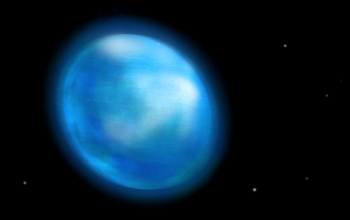This new view is from an array of telescopes located at the Mount Wilson Space Observatory in California * By operating four telescopes together, an image with a resolution 25 times higher than the Hubble Space Telescope was obtained

Photo credit: Zina Daretsky, National Science Foundation NSF
One of the brightest stars closest to Earth is the star Altair. It is about 15 million light years away. For the first time, astronomers describe an unusual picture on the surface of the strange neighbor.
Unlike any red giant star described so far, Altair is relatively small. It is only 1.7 times more massive than our Sun. The rotation speed of the star is about 300 km per second and it completes one lap around itself in 6.5 hours. This speed makes the star flatter, so it is 22% wider than it is tall.
This new view was achieved thanks to six telescopes located at the space observatory on Mount Wilson in California and operated by the Center for High Angular Resolution Astronomy (CHARA), where there is a special device that allows them to clean up the distortion created by the Earth's atmosphere. By operating four telescopes together, an image with a resolution 25 times higher than the Hubble Space Telescope was obtained.

An artist's simulation that increased the resolution of the image received from the telescopes - a star that rotates so fast must be stretched at its center.
Translation: Yariv Zerbiv
מקור: National Science Foundation.

5 תגובות
Repeats the question
Two fundamental forces act on a planet.
1. The force of gravity that compresses the star
2. The force that opposes the compression caused by the nuclei of the atom
Since the star rotates around its axis at a very high speed
(in the case of the star Altair) then another force is created that opposes the compression of the star.
Is the addition of the centrifugal force that opposes the force of gravity
Weakens the strength of the thermonuclear reactions and extends the life of the star?
What is the question here?
a question
Because of the high rotation speed, the centrifugal force acting inside the star is relatively strong.
Does this situation weaken the strength of the thermonuclear reactions
and prolongs the life of the star.
Fix:
The star is only 15 light years away from us (hence the concept of the strange neighbor)
The number million was messed up because it is about a million times farther away from us than the sun itself
to the opponent
I guess its rotation speed is 300 kilometers
In the second